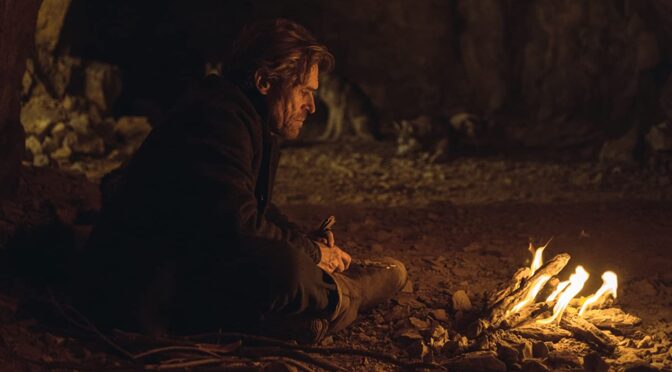 Layers upon layers of abstract semiotic nostalgia is one way of describing Abel Ferrara’s latest artistic endeavour. SIBERIA is Willem Dafoe’s sixth collaboration with the director and an altogether different journey than his performance in TOMMASO last year. Buried in the frozen hinterlands is a film that lurches through one man’s subconscious as he attempts at reconciling the events of his past. Although curiously engaging, it frequently stumbles into obscurity.
Layers upon layers of abstract semiotic nostalgia is one way of describing Abel Ferrara’s latest artistic endeavour. SIBERIA is Willem Dafoe’s sixth collaboration with the director and an altogether different journey than his performance in TOMMASO last year. Buried in the frozen hinterlands is a film that lurches through one man’s subconscious as he attempts at reconciling the events of his past. Although curiously engaging, it frequently stumbles into obscurity.
The story commences with a monologue from Clint (Dafoe), reminiscing about fishing trips with his father and brother in his youth. Yet we then find Clint running a shack-style bar up in the Siberian mountains, with little explanation as to how he came to be here. The film then begins its descent into obscurity, where we occasionally meet his patrons, but are afforded no subtitles and so the language barrier adds to the mystery. The customers are supposedly Inuit and seeking the comfort of coffee or strong liquor to warm themselves from the snowstorms. All the while, this is accompanied by the relentless howling of huskies, who accompany him across his travel towards self-actualisation. When talking with a drunken man playing the slot machines, he asserts that he doesn’t partake in gambling as he has no interest in winning or losing, a symbolic suggestion of his disassociation with life and experiencing anything; content with his current existence. The film lurches into more abstract imagery during a tender moment with a patron who is pregnant. We suspect Clint is the father, as the camera pans on their naked embrace, the veins in her skin straining blue against the glow of the fire. It is uncomfortable viewing but serves as a starting point to Clint’s struggles with paternalism. The colour palette is set to high contrast, accentuating the rugged texture of Dafoe’s withered skin and enhancing the depth of the foreboding landscape. From there, Clint, in the company of his hounds, falls into a dreamscape that explores his detached relationship with his past, and growing existentialism.
Ferrara invests in exploring the lapping planes of territory and landscape, which feel undefined yet familiar. There is an unusual atmosphere about it, tense and gripping, which almost mirrors the discomfort of a Lars Von Trier film, but without the academic snobbery. Ferrara’s is far more of an expressionist voyage. From grassy plains to sandy caverns in the desert, Clint is relatively quiet as his memories take hold of the narration. There are many naked figures in the caves of his mind, those with disabilities, those who are dying; uttering a few sentences repeatedly as if they are frozen within this singular memory he has of them. Dafoe very much has to bare himself to the world in this role; its an intimate exposure, for a character where we are only afforded fragments of his life. It’s different from his role in Egger’s THE LIGHTHOUSE, which is more continuously deranged but very much encompasses that idea of a lost soul, bereft from reality. From manic laughter to scenes of men being shot at in the shadow of a watchtower, this externalised portrayal of internal feelings is extremely meta, and uncomfortable to experience.
The film will leave furrowed brows on some unsuspecting viewers, as they attempt to piece together the fragments of Dafoe’s past and it’s relevance to his current snowy life in Siberia. Not all art is comprehensible, and Ferrara seems to be content with leaving some audience members out in the cold, puzzling over their Jungian-laden experience of a film.

